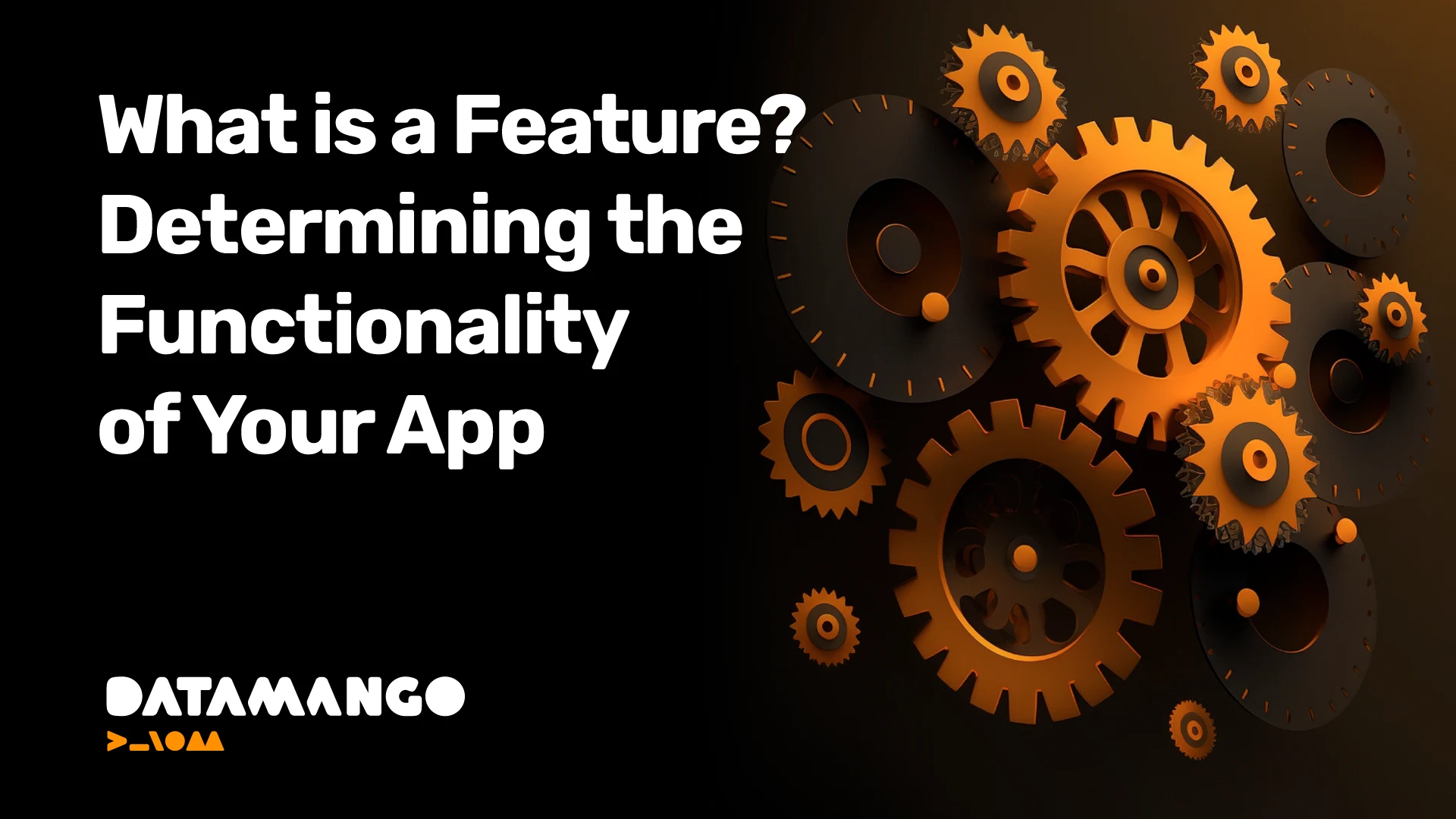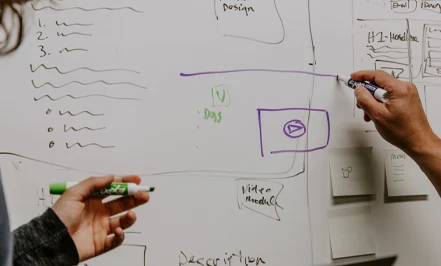
What is a Feature? Determining the Functionality of Your App

by Josh Watkinson,
17-Nov-2023
As an aspiring startup founder, you're driven by a dream—a vision that thrives on innovation and ambition. You envisage an app that not only meets market demands but could be a revolution in the way we interact with technology. But amidst this excitement lies a critical question: What makes an app not just functional, but exceptional?
This is where explaining the essence of app features and their functionality becomes your stepping stone to success.
Part 1: Decoding App Features—The Building Blocks of Your Dream App
What is an App Feature?
At its most basic, a feature in an app is an individual component that provides value to users. It could be the ability to upload a photo, create a personalised playlist, or complete a secure transaction. Regardless of its complexity, each feature serves a distinct purpose in the user's journey, shaping the app's functionality as a whole. Here are some common examples of app features:
- User authentication
- Payment gateways
- Personalised content and data feeds
Types of App Features
- Basic features:
- Login capabilities
- User profiles
- Basic navigation
- Advanced or more complex features:
- Custom data analytics
- AI-driven recommendations
- Real-time data synchronisation.
There are also niche or specialised features, such as tools tailored to specific industries, e.g., appointment scheduling for healthcare apps or portfolio management for finance apps.
Identifying and Describing Features
So how do we define the right features for an app? This firstly involves recognising customer needs, market trends, and business goals—a delicate balancing act that requires a sound strategy. Our step-by-step guide to gathering software requirements for successful development is an effective starting point for this process.
When it comes to describing a feature, clarity is crucial. A well-defined feature outlines its purpose, how users interact with it, and the benefits it provides. This not only benefits the end-user but helps teams align their efforts towards a common goal.
Matching Features with User Needs
- Know your audience: Delve deep into the needs, pain points, and aspirations of your target users.
- Feature relevance: Ensure every feature directly addresses a specific need or desire of your users, adding tangible value to their experience.
Part 2: App Functionality—The Symphony of Features
Broadly speaking, the functionality of an app encompasses the range of operations it can perform. It's the sum of all features that power user experiences, from the most basic interfaces to more complex components. On a practical level, this means that the functionality of an app dictates what tasks users can accomplish through it.
What Constitutes App Functionality?
- Definition: app functionality refers to the collective capabilities of an app, determined by the integration of its various features.
- Importance: the right functionality can elevate an app from a mere tool to an indispensable asset for its users.
Steps to Determine Optimal Functionality
- Assess user requirements: Examine the tasks and goals your users want to achieve through your app.
- Prioritise features: Strategically decide which features are essential for the initial launch, which are nice-to-have, and which can be added in future updates. The MoSCoW prioritisation framework is a great starting point.
- Continuous feedback: Utilise user feedback to continually refine and enhance the app's functionality.
Part 3: Balancing Functionality and Usability
An app's success isn't simply about possessing an array of features but ensuring they enhance, rather than cloud the user experience. This requires a delicate balance between functionality (the range of operations possible) and usability (the ease with which these can be performed).
Avoid Overstuffing and Scope Creep
- Challenges: Overstuffing an app with features can lead to significant user confusion and frustration. Similarly, allowing the scope of your app to stray too far from it’s intended purpose risks diluting its offering and jeopardising leads.
- Solutions: Create stringent product management processes to validate and estimate the effort required to implement new ideas before building them into features.
Embrace Iteration
- Develop step-by-step: Successful apps are an outcome of iterative development and continuous refinement—a process called Agile Development.
- Why Agile helps: Agile practices bring flexibility and responsiveness to software development..
Part 4: Tackling Technical Challenges in App Feature Development
It’s great to have a feature-rich app and the functionality to support it. But, if you have fundamental technical hurdles and financial hurdles to overcome, you could be at risk of jeopardising your chances of gaining short-term momentum and endangering ongoing success.
Navigating Database Architecture and Deployment to Support Functionality:
- Challenges: Addressing scalability, security, and efficiency in managing data and deploying the app.
- Solutions: Implementing robust database designs, embracing cloud-based solutions, and ensuring scalable architecture to support growth and user demands.
Cost Management and Funding Opportunities:
- Strategic development: Emphasising the development of MVPs and rapid prototypes to manage costs and validate ideas quickly.
- Funding assistance: Leveraging our industry connections and knowledge of incentive schemes to guide you towards potential funding and investment opportunities.
Part 5: Real-World Applications and Success Stories
Datamango Case Studies Breakdown
- Arco Cyber: we partnered with Arco Cyber to craft a solution that revolutionised how enterprise CISOs manage and report cyber security data, leading to a £3.5 million valuation in under six months.
"Datamango’s expertise was pivotal in evolving our concept into a product that is setting new industry standards."
Matthew Helling, CEO at Arco Cyber.
- Softcat PLC: our development of a sustainability platform MVP in just three months demonstrates our capability to transform concepts into scalable, market-ready solutions.
"Working with Datamango wasn't just about development; it was about embracing our vision and making it a tangible reality."
John Gladstone, Sustainability Lead at Softcat PLC.
Local Expertise, Global Impact
Benefits of a UK-Based Development Team:
- Seamless communication: Overcoming challenges of time zone differences and language barriers for more effective collaboration.
- Cultural and regulatory alignment: Offering a deep understanding of the local business environment and compliance with UK and EU regulations.
Why Choose Datamango?
- Our commitment: more than just a development team, we are your strategic partners in innovation, deeply invested in your vision and success.
- Our approach: blending technical expertise with a profound understanding of your market needs and vision.
- Cross-functional skills: our multidisciplinary skillsets span DevSecOps, public/private cloud infrastructure, testing/QA, marketing, design, content creation and beyond, enabling us to deliver comprehensive, market-ready solutions.
Your Dream, Our Mission
Your aspiration to build an innovative app deserves a partner who understands the intricacies of app development and is deeply invested in your vision. Datamango stands ready to help you navigate this exciting journey, ensuring your app is not just a product, but a realisation of your dream.
Embark on your startup adventure with Datamango. Reach out to us below:




